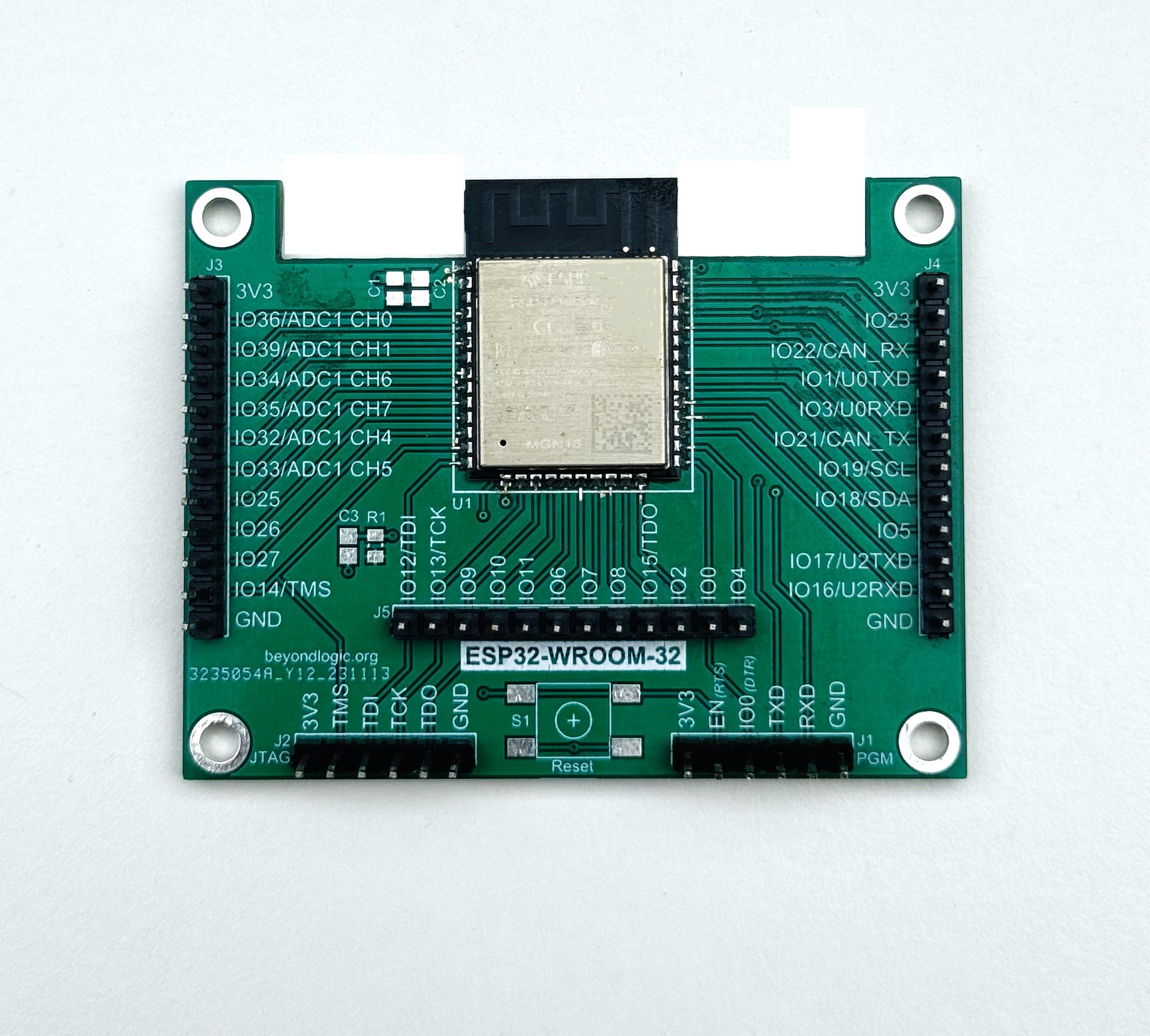
ESP32-WROOM-32 Breakout Board for Arduino
AU$20.00
ESP32-WROOM-32 Breakout Board Overview
The ESP32-WROOM-32 breakout board is designed to accommodate Espressif Systems' ESP32-WROOM modules, featuring a microcontroller with integrated WiFi and Bluetooth capabilities. This minimalist board is ideal for battery-operated devices, as it does not include a voltage regulator.
ESP32 SoC Features:
Xtensa dual-core 32-bit LX6 microprocessor, up to 240MHz.
448KB ROM for bootloader and core functions.
520KB SRAM (plus 16KB SRAM in RTC).
802.11b/g/n WiFi up to 150 Mbps.
Bluetooth V4.2 BR/EDR and Bluetooth LE.
Operates on 3.0 to 3.6V.
ESP32-WROOM-32E Module: The latest ESP32-WROOM-32E module includes the new ECO V3 silicon wafer (ESP32-D0WD-V3), featuring secure boot and flash encryption along with various silicon bug fixes. A detailed datasheet for the ESP32-WROOM-32E can be found here.
Firmware Development: The primary development framework for the ESP32 is the ESP32 IDF (IoT Development Framework). A comprehensive tutorial on getting started with the Espressif esp-idf & Eclipse IDE is available. Additionally, the ESP32 is widely supported by the Arduino ecosystem. The Arduino core for ESP32, along with setup instructions for the Boards Manager, can be found in this GitHub repository.
Programming: The ESP32 features an onboard UART bootloader in ROM. To activate the bootloader, hold GPIO0 low during reboot. The default communication settings are 115,200 baud rate, 8N1 configuration. Key programming pins include:
GPIO0
RTS
DTS
The Esptool.py utility can automatically reset the ESP32 and enter the bootloader using RTS and DTS signals. To prevent the ESP32 from being held in reset, disable hardware flow control in terminal programs.
Debugging with JTAG: The ESP32 can also be programmed via the JTAG interface. Detailed information on JTAG debugging can be found here.
Battery Operation: Designed with low-power and battery operation in mind, this board is perfect for testing the ESP32's low power modes. While the ESP32 silicon supports voltages from 2.3V to 3.6V, the SPI flash in the VROOM modules requires a minimum of 3V. A LiFePO4 cell, with its voltage range of 2.5 to 3.65 volts, is ideal, maintaining the necessary 3V for most of its discharge cycle.
Antenna Configurations: The ESP32-WROOM-32 module is available in two antenna variants:
ESP32-WROOM-32E: Features a PCB antenna, with a design cutout under the antenna per Espressif's recommendations (refer to section 3.1.2 of the ESP32 Hardware Design Guidelines for positioning details).
ESP32-WROOM-32EU: Includes an IPEX (u.FL) connector for an external antenna. This variant is 6.3mm shorter, ensuring it does not extend beyond the end of the PCB.
This comprehensive guide outlines the key aspects and functionalities of the ESP32-WROOM-32 breakout board, ensuring effective utilization for various applications.
